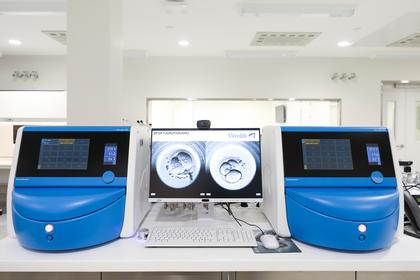Search
Time-lapse is an imaging technique used to create videos using a series of pictures taken at particular time intervals. It allows us to see in greater detail the development that occurs in certain intervals, which take place so slowly which are invisible to the naked eye. Thanks to time-lapse technology, we can see them more rapidly and in full detail. In time-lapse incubator, pictures of embryos will be takes at different time intervals (every 10 or 20 minutes, for instance), from different viewpoints. With the visual obtained the embryologist now can see the entire development process of each embryo individually or collectively - from the moment insemination is carried out until they are transferred, frozen, or thrown away.
One of the most remarkable advancements achieved in the past few years in the field of Assisted Reproduction is precisely the use of this technology to monitor embryo development in vitro.
The application of Time-lapse technology in the field of IVF are include three indispensable parts:
1. Time-lapse embryo culture - providing a stable and safe culture environment for embryo development
2. Time-lapse embryo monitoring - using high-resolution cameras to obtain rich embryo development data
3. Time-lapse consistent evaluation of embryos - to evaluate the developmental potential of embryos
The main limitation of traditional methods was that the evaluation of embryos was conducted only at particular stages of development. In other words, embryologist gather static information from a dynamic process. Subsequently, embryologist miss material information about the embryo development process.
Furthermore, evaluating the quality of embryos under the conventional microscope is not a recommended practice, as quality diminishes each time the embryos leave the incubator.
Thanks to time-lapse technology, embryologist can monitor embryo development without taking the embryos out of the incubator, thereby maintaining them in ideal culture conditions.
The use of time-lapse significantly improves live birth rates and reduced early pregnancy loss rates.
Reference:
1. Kovacs: Embryo selection: the role of time-lapse monitoring. Reproductive Biology and Endocrinology 2014 12:124.
2. Alpha scientists in reproductive medicine and ESHRE special interest group of embryology: The Istanbul consensus workshop on embryo assessments: proceedings of an expert meeting. Hum Reprod 2011, 26:1270–1283.
3. Kirkegaard K, Agerholm IE, Ingerslev HJ: Time-lapse monitoring as a tool for clinical embryo assessment. Hum Reprod 2012, 27:1277–1285.
4. Wong C, Chen AA, Behr B, Shen S: Time-lapse microscopy and image analysis in basic and clinical embryo development research. Reprod Biomed Online 2013, 26:120–129.











